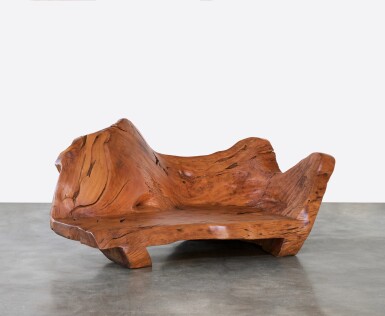
Property from an Important American Collection
Hugo França
"Taja" Settee
Auction Closed
June 9, 06:24 PM GMT
Estimate
15,000 - 20,000 USD
Lot Details
Description
Property from an Important American Collection
Hugo França
"Taja" Settee
circa 2007
pequi wood
impressed HUGO/FRANCA
44½ x 92⅛ x 66¼ in. (113 x 234 x 168.3 cm)
Sotheby's New York, June 12, 2009, lot 1
Evelise Grunow, Hugo França: The Story of the Tree, New York, 2008, pp. 18 (for a related example)
Working with salvaged fallen trunks from the south Bahia rainforest in eastern Brazil, Hugo França harnesses the natural power and presence of colossal pequi trees and translates it into superbly sculpted forms. Motivated by what he calls "minimum intervention," França's designs expand upon the indigenous practices of the Pataxó Indians of the region, with whom he studied woodworking for over ten years.
